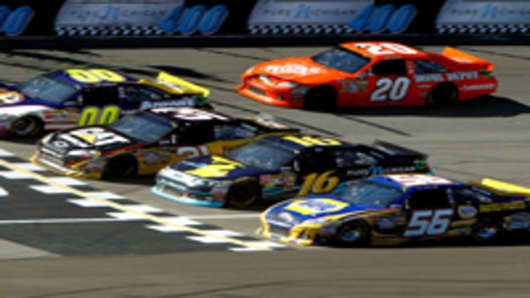Until about a year ago, Jo Ann Jenkins, the president of the AARP Foundation, had been searching hard for someone, or something, to bring more awareness of what the organization considers to be a serious and overlooked issue. According to the foundation, 9 million elderly Americans are hungry.
The foundation settled on an unlikely front man: a 40-year-old millionaire with only a sprinkling of gray hair and still several years from retirement, who has two young children and belts himself into a 3,500-pound stock car and drives it much faster than 10 miles per hour.
The AARP paid an undisclosed fee — probably in the tens of millions of dollars — to Hendrick Motorsports to paint “Drive to End Hunger” on the Chevrolet raced by Jeff Gordon, four-time top-series champion, for 22 races each in the 2011, 2012 and 2013 seasons.
“It helped us reach people we wouldn’t have been able to meet through community activities throughout the country," says Jenkins. “There isn’t a bigger audience than we know of than the Nascar community."
That community appears to have dwindled during the economic downturn. Attendance has only held steady or has slipped at most tracks. Most notable among them is the Indianapolis Motor Speedway, which hosts a mid-summer race, the Brickyard 400, that drew an estimated 138,000 last year, about half of the 270,000 that attended the race in 2007.
Nascarreported an 8 percent increase in the Sprint Cup Series television ratings in 2011 compared to 2010, but viewership for several marquee races was down, including the Daytona 500, which drew 15.8 million viewers a year ago, compared with 17.8 million in 2008.
Nascar's eight-year, $4.48-billion television contractwith Fox, ESPNand Turneris to expire at the end of the 2014 season, but the organization and its race teams have already altered the way they do business. Corporate sponsors, more important to the sport than gasoline, are being recruited harder, and from a wider spectrum.



